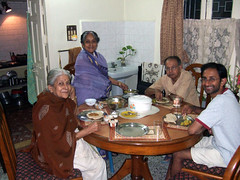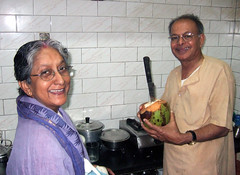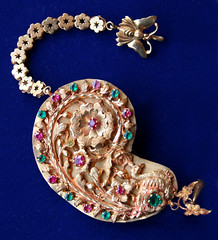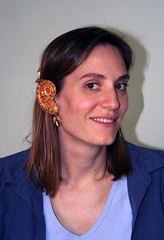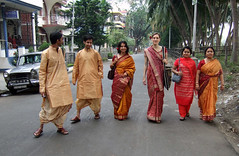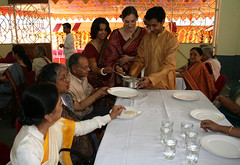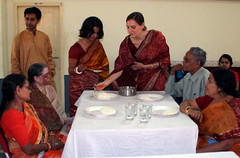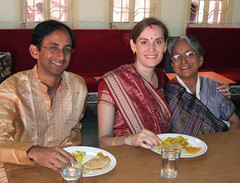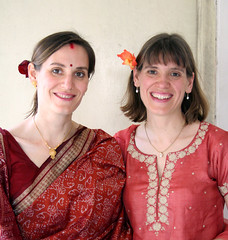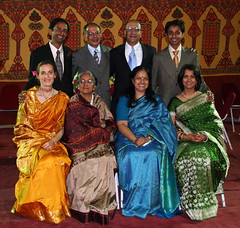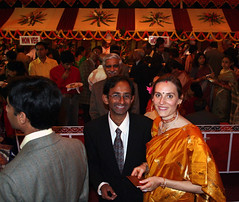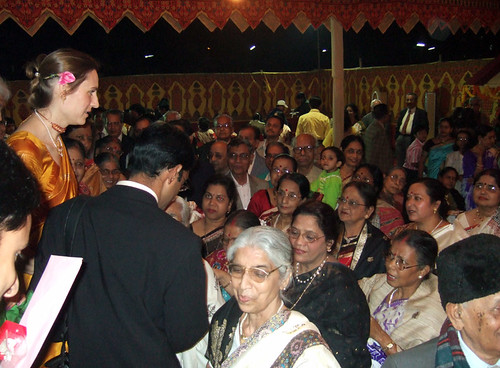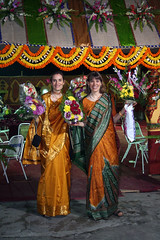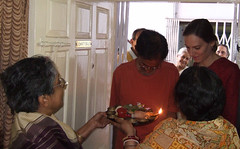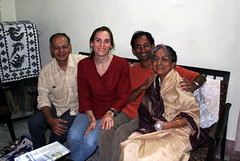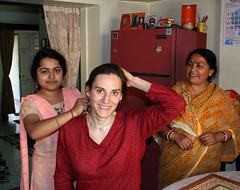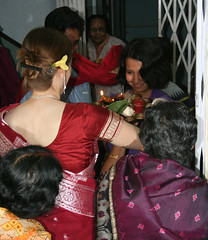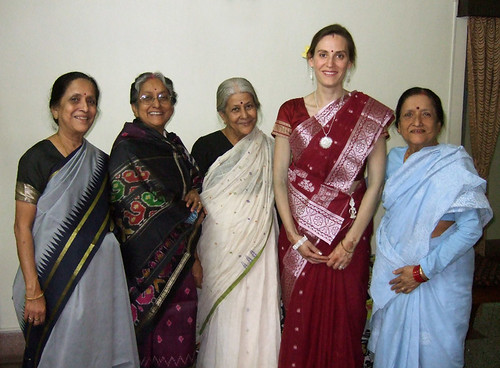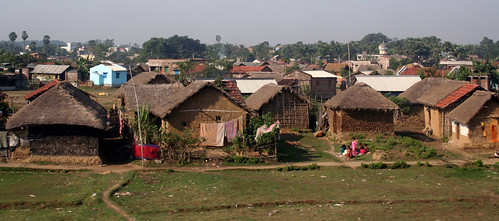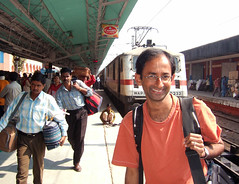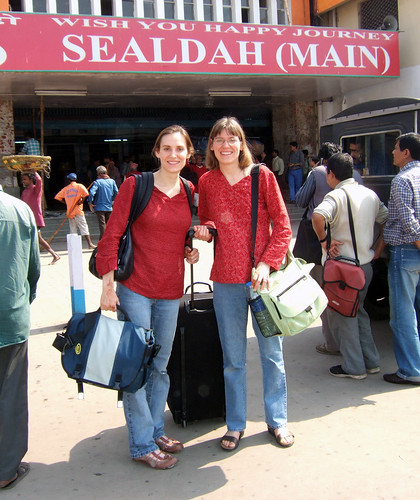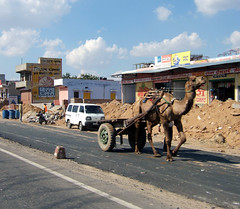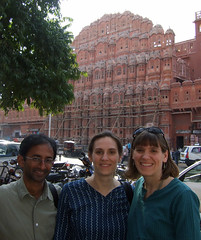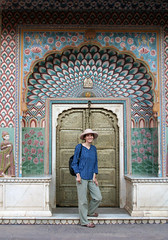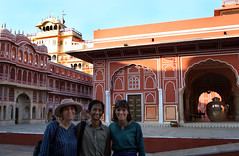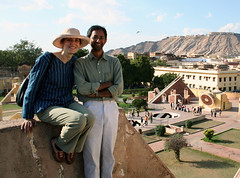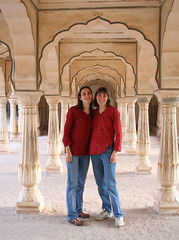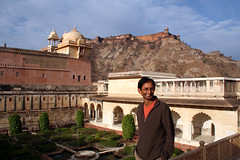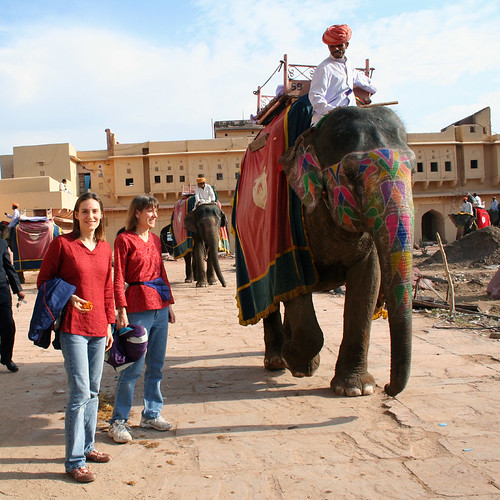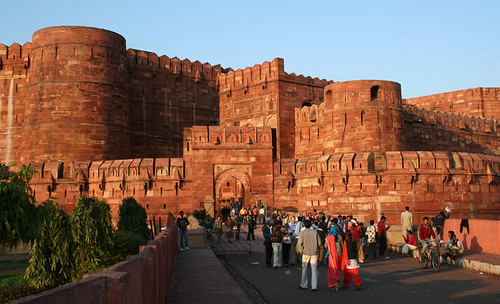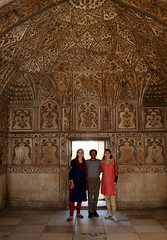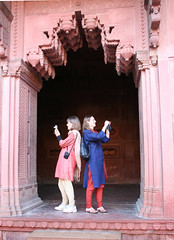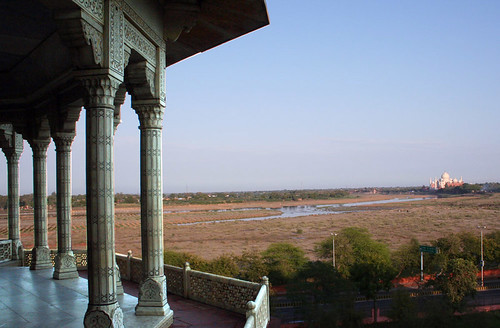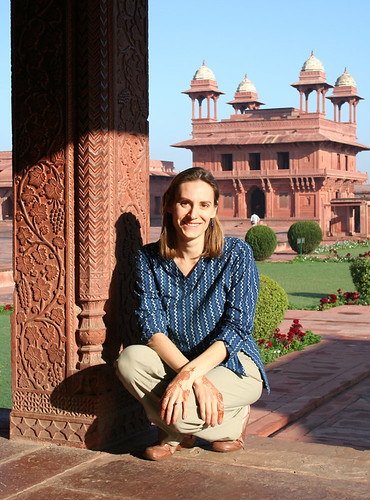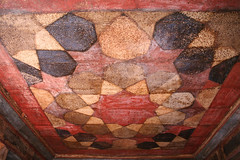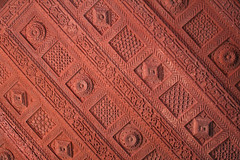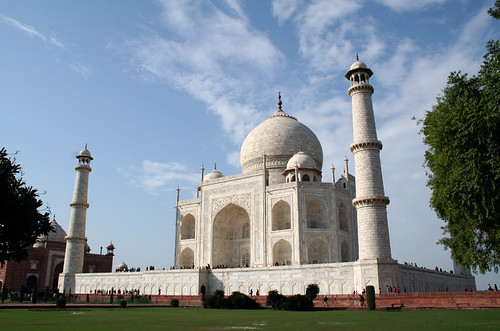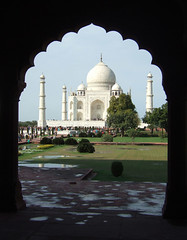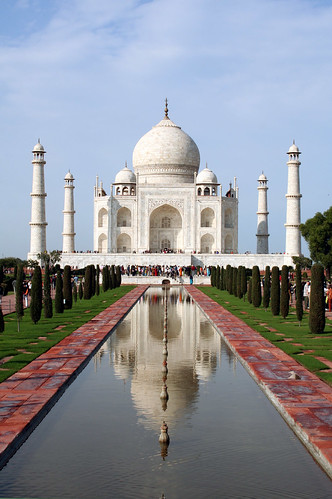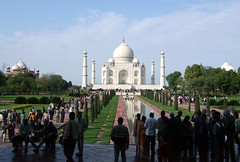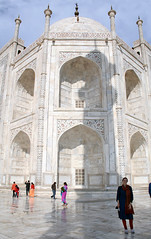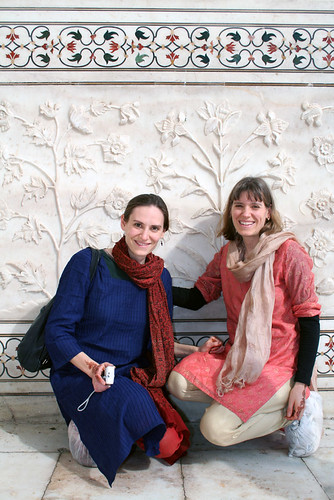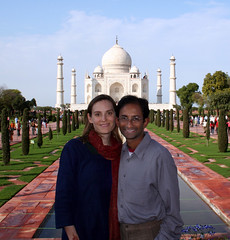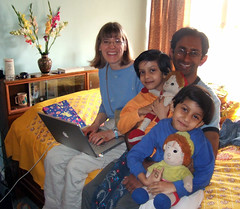 After the reception things quieted down quite a bit as family and friends returned home. Here is Caitlin sending one last email to her family before leaving for the airport. Shami's nieces (his cousin's little girls) Doyel and Lali, were quite sad to see Caitlin go, and so were we.
After the reception things quieted down quite a bit as family and friends returned home. Here is Caitlin sending one last email to her family before leaving for the airport. Shami's nieces (his cousin's little girls) Doyel and Lali, were quite sad to see Caitlin go, and so were we.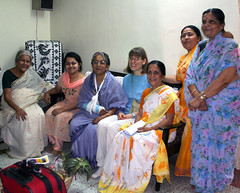
A photo with Caitlin before leaving for the airport: Mashimoni, Chumki, Maini, Caitlin, Lalmashi, Kaki, and Mami (Shami's mother's brother's wife).
You will see that Shami's mother is wearing a cast. Unfortunately she broke her arm the day before the reception! She was in quite a lot of pain, and it was especially hard for her to be immobilized when there was so much to do. But she is incredibly strong and stoic, and handled everything very well.

We spent the next evening opening presents. Although the invitation cards requested no gifts, we were nonetheless inundated! We would like to thank everyone for their generosity.
(Shami is holding up a quilted bag that my mother Barbara made, as a gift to Shami's mom. She uses it and loves it! At the reception it was used to collect cards.)
Soon the house was pretty quiet, with just Shami's parents, us, and Mashimoni left. Mashimoni kindly stayed on for a while to help Maini out around the house. Here we are, sitting down to a quiet dinner at home, with dal, a curry and chapatis.
Shami's dad brought home a green coconut so that I could try drinking its sweet milk. Here he is opening it up with a big knife. It was quite good!

And then, it was time to say goodbye to India and head back to Australia. What an amazing two weeks it had been!
The ornamental ear piece below was one of the gifts I received from Shami's parents -- a real family heirloom. There were two of them, one each for me and Uttara. When she got married, Shami's mother received them from her mother-in-law, who had in turn received them from her mother-in-law. They are incredible pieces, made of solid gold with cut emeralds and rubys. Notice the design of the peacock, with its magnificent tail curling around!
